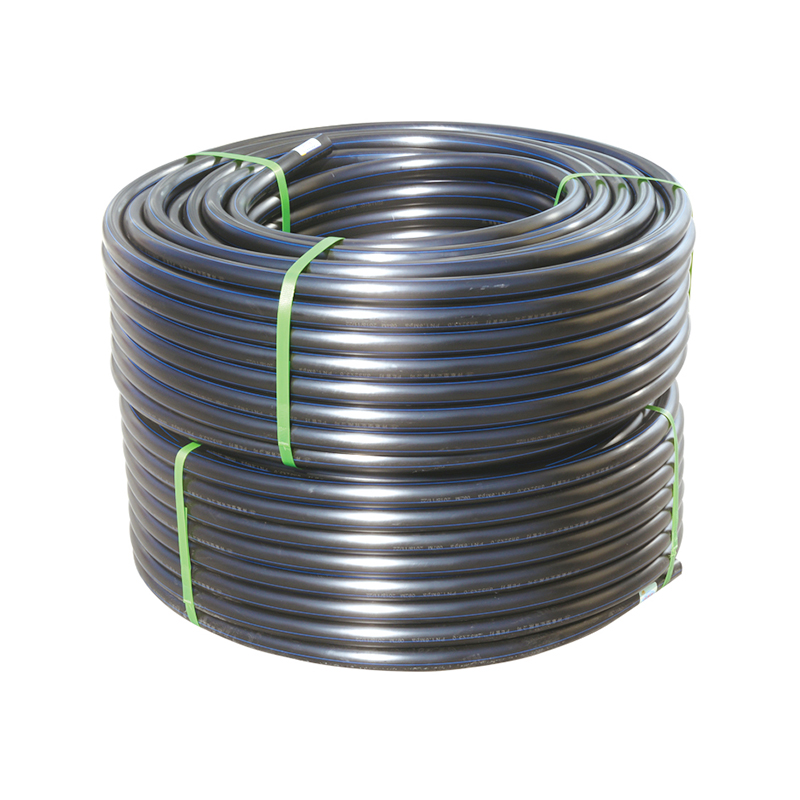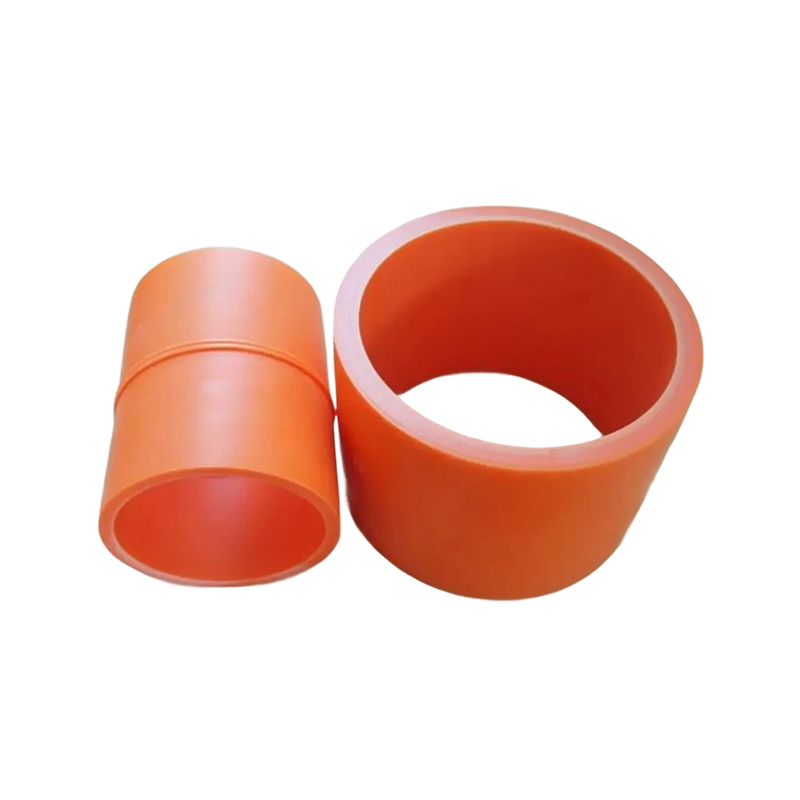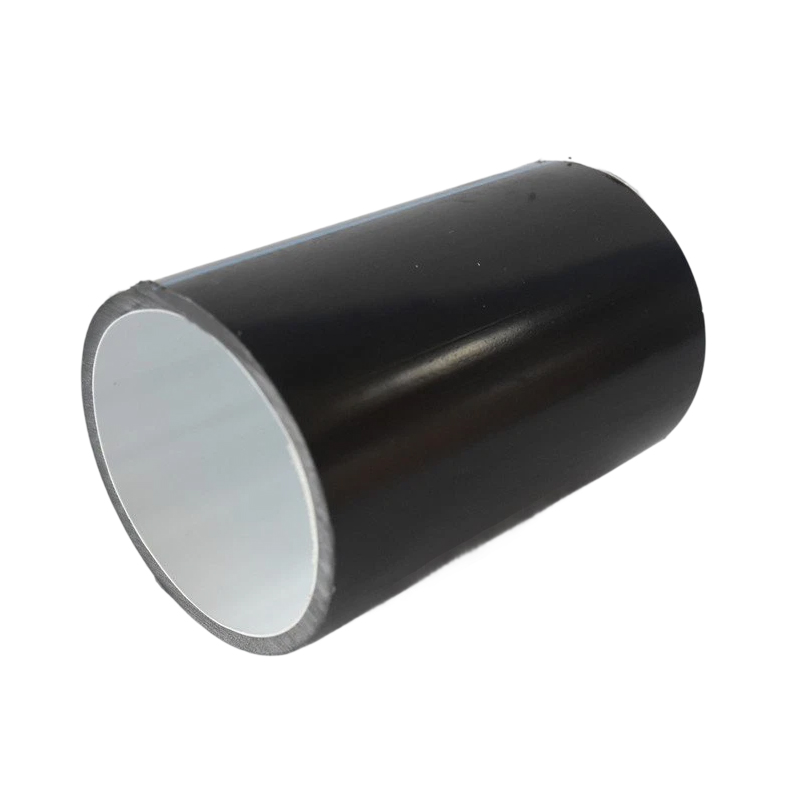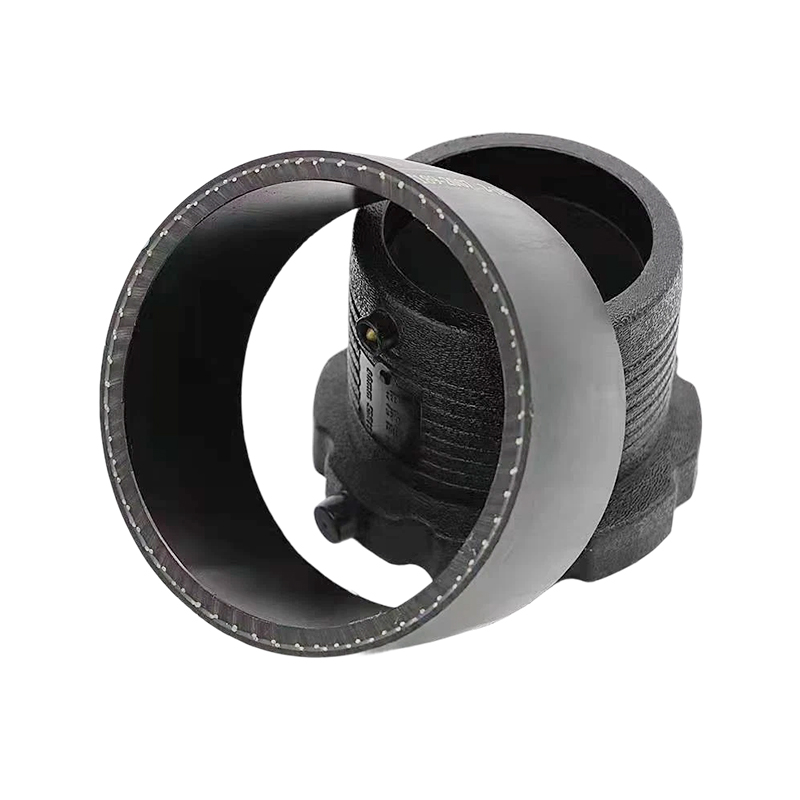How does the wear resistance of PE pipe reflect its durability in long-term use?
Release Time : 2025-07-02
PE pipe, the full name of polyethylene pipe, stands out in many application scenarios with its excellent wear resistance and becomes the preferred material in many engineering projects. Its wear resistance not only ensures the reliability of the pipe in long-term use, but also greatly extends the service life and reduces maintenance costs. This characteristic makes PE pipe widely used in many fields such as municipal water supply and drainage, gas transmission and agricultural irrigation.
First of all, the main component of PE pipe is polyethylene resin, which has a natural anti-wear advantage. The molecular chain structure of polyethylene is tight and orderly, giving the surface of the pipe extremely high smoothness and hardness. In practical applications, whether it is transporting liquids or gases containing suspended particles, PE pipe can effectively resist the loss caused by friction. For example, in municipal water supply and drainage systems, sewage often contains impurities such as sand, gravel, and silt. These particulate matter will cause continuous friction on the pipe wall when flowing through the pipe. However, because the inner wall of PE pipe is smooth and has good wear resistance, it can significantly reduce the erosion of these particles on the pipe wall, thereby maintaining the integrity and smoothness of the internal structure of the pipe.
Secondly, the wear resistance of PE pipe is also reflected in its excellent impact resistance. During transportation and installation, the pipeline will inevitably be affected by external impact or pressure changes. Polyethylene material itself has high toughness and elasticity, and it will not easily break or deform even if it is subjected to a certain degree of external force impact. This feature not only ensures the safety of the pipeline during construction, but also lays a solid foundation for subsequent long-term operation. Especially in some areas with complex geological conditions or frequent earthquakes, PE pipe can work stably in harsh environments with its excellent impact resistance and wear resistance, avoiding leakage or interruption problems caused by pipeline damage.
Furthermore, the wear resistance of PE pipe is also reflected in its corrosion resistance. Unlike metal pipes that are easily corroded by chemicals such as acids, alkalis and salts, polyethylene materials are naturally inert and hardly react with most chemicals. This means that PE pipe can be used for a long time in a variety of complex environments without worrying about corrosion. For example, in chemical parks or industrial wastewater discharge systems, the medium often contains a high concentration of corrosive components. In this case, PE pipe can not only resist the erosion of chemicals, but also effectively prevent the thinning and perforation of the pipe wall caused by corrosion, ensuring the long-term durability of the pipeline system.
In addition, the wear resistance of PE pipe is closely related to its connection method. Hot melt or electric fusion connection technology is usually used for pipe splicing. Both methods can achieve seamless docking and form an integral closed system. Hot melt connection melts and fuses the ends of the two pipes together by heating, while electric fusion connection uses the resistance wire embedded in the pipe fittings to heat and melt to complete the connection. In either case, the interface is guaranteed to have excellent wear resistance and sealing. Compared with traditional threaded connections or other mechanical connection methods, hot melt and electric fusion connections reduce potential leakage points and enhance the reliability and stability of the entire pipeline system.
It is worth noting that the wear resistance of PE pipe is not only reflected in the physical level, but also in its environmental benefits. Due to its strong wear resistance and the pipe is not easily damaged, it does not need to be frequently replaced or repaired throughout its life cycle, which not only saves resource consumption but also reduces the generation of waste. At the same time, the production process of PE pipe is relatively environmentally friendly, and the raw materials can be recycled and reused, which further reflects its concept of green and sustainable development. In the current global context of advocating a low-carbon economy, choosing PE pipe as an important part of infrastructure construction is undoubtedly a positive contribution to environmental protection.
Finally, the technical support and service system provided by the brand also provides strong protection for users. The professional technical service team can provide detailed consulting advice in the early stage of the project and formulate personalized solutions according to specific needs. During the construction period, the technicians will also visit the site to guide the operation to ensure that each process meets the standard requirements. In terms of after-sales service, the manufacturer promises to be responsible for the quality of the product to the end. Once a problem is found, professionals will be dispatched immediately to deal with it to ensure that the interests of users are not harmed.
In summary, PE pipe has shown unparalleled durability in long-term use with its excellent wear resistance. From the wear resistance and impact resistance of the material itself to the corrosion resistance, to the advanced connection technology and perfect after-sales service, every link provides strong support for the long-term and stable operation of PE pipe. Whether in municipal engineering, industrial field or agricultural irrigation, PE pipe plays an irreplaceable role and has become an indispensable part of modern infrastructure construction. In the future, with the advancement of science and technology and the application of new materials, I believe that PE pipe will show its unique charm in more fields and continue to promote the development of various industries.
First of all, the main component of PE pipe is polyethylene resin, which has a natural anti-wear advantage. The molecular chain structure of polyethylene is tight and orderly, giving the surface of the pipe extremely high smoothness and hardness. In practical applications, whether it is transporting liquids or gases containing suspended particles, PE pipe can effectively resist the loss caused by friction. For example, in municipal water supply and drainage systems, sewage often contains impurities such as sand, gravel, and silt. These particulate matter will cause continuous friction on the pipe wall when flowing through the pipe. However, because the inner wall of PE pipe is smooth and has good wear resistance, it can significantly reduce the erosion of these particles on the pipe wall, thereby maintaining the integrity and smoothness of the internal structure of the pipe.
Secondly, the wear resistance of PE pipe is also reflected in its excellent impact resistance. During transportation and installation, the pipeline will inevitably be affected by external impact or pressure changes. Polyethylene material itself has high toughness and elasticity, and it will not easily break or deform even if it is subjected to a certain degree of external force impact. This feature not only ensures the safety of the pipeline during construction, but also lays a solid foundation for subsequent long-term operation. Especially in some areas with complex geological conditions or frequent earthquakes, PE pipe can work stably in harsh environments with its excellent impact resistance and wear resistance, avoiding leakage or interruption problems caused by pipeline damage.
Furthermore, the wear resistance of PE pipe is also reflected in its corrosion resistance. Unlike metal pipes that are easily corroded by chemicals such as acids, alkalis and salts, polyethylene materials are naturally inert and hardly react with most chemicals. This means that PE pipe can be used for a long time in a variety of complex environments without worrying about corrosion. For example, in chemical parks or industrial wastewater discharge systems, the medium often contains a high concentration of corrosive components. In this case, PE pipe can not only resist the erosion of chemicals, but also effectively prevent the thinning and perforation of the pipe wall caused by corrosion, ensuring the long-term durability of the pipeline system.
In addition, the wear resistance of PE pipe is closely related to its connection method. Hot melt or electric fusion connection technology is usually used for pipe splicing. Both methods can achieve seamless docking and form an integral closed system. Hot melt connection melts and fuses the ends of the two pipes together by heating, while electric fusion connection uses the resistance wire embedded in the pipe fittings to heat and melt to complete the connection. In either case, the interface is guaranteed to have excellent wear resistance and sealing. Compared with traditional threaded connections or other mechanical connection methods, hot melt and electric fusion connections reduce potential leakage points and enhance the reliability and stability of the entire pipeline system.
It is worth noting that the wear resistance of PE pipe is not only reflected in the physical level, but also in its environmental benefits. Due to its strong wear resistance and the pipe is not easily damaged, it does not need to be frequently replaced or repaired throughout its life cycle, which not only saves resource consumption but also reduces the generation of waste. At the same time, the production process of PE pipe is relatively environmentally friendly, and the raw materials can be recycled and reused, which further reflects its concept of green and sustainable development. In the current global context of advocating a low-carbon economy, choosing PE pipe as an important part of infrastructure construction is undoubtedly a positive contribution to environmental protection.
Finally, the technical support and service system provided by the brand also provides strong protection for users. The professional technical service team can provide detailed consulting advice in the early stage of the project and formulate personalized solutions according to specific needs. During the construction period, the technicians will also visit the site to guide the operation to ensure that each process meets the standard requirements. In terms of after-sales service, the manufacturer promises to be responsible for the quality of the product to the end. Once a problem is found, professionals will be dispatched immediately to deal with it to ensure that the interests of users are not harmed.
In summary, PE pipe has shown unparalleled durability in long-term use with its excellent wear resistance. From the wear resistance and impact resistance of the material itself to the corrosion resistance, to the advanced connection technology and perfect after-sales service, every link provides strong support for the long-term and stable operation of PE pipe. Whether in municipal engineering, industrial field or agricultural irrigation, PE pipe plays an irreplaceable role and has become an indispensable part of modern infrastructure construction. In the future, with the advancement of science and technology and the application of new materials, I believe that PE pipe will show its unique charm in more fields and continue to promote the development of various industries.







